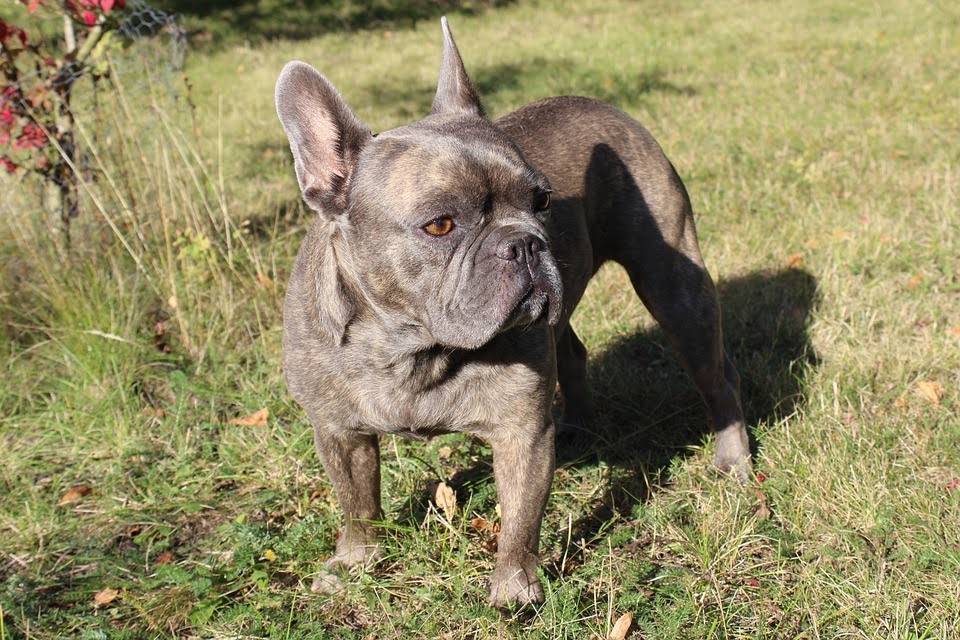All You Need to Know about Lilac French Bulldogs

With their distinctive silver-lavender coat and charming personality, lilac French Bulldogs are many dog lovers’ dream. But what makes them so special?
These rare beauties are more than just appearance – they’re loyal companions with hilarious personalities and special needs.
In this guide, we’re covering everything that makes Lilac Frenchies truly one-of-a-kind, from their genetic makeup and unique traits to the challenges of finding a reputable breeder (without falling for scams).
Whether you’re just curious or ready to make one your best friend, let’s explore if a lilac French Bulldog is the right breed for you!
What is a Lilac French Bulldog?
A lilac French Bulldog is a rare color variation of the popular French Bulldog breed, distinguished by its stunning silvery-lavender coat and often light-colored eyes.
Unlike standard Frenchies, this unique hue isn’t just a coat color – it’s the result of specific genetic combinations that create their one-of-a-kind appearance. While they share the same playfulness as all other French Bulldogs, their striking (and unique) color makes them highly sought after, and often more expensive.
Expressions of the Lilac Gene
The lilac gene and its remarkable coat color come from a double dilution of two recessive French Bulldog genes:
– Blue Frenchie Gene: Dilutes black pigment to a soft gray shade.
– Chocolate Frenchie Gene: Turns black pigment into a warm chocolate brown.
Only when both parents carry a copy of each of these genes can they produce offspring with the lilac French Bulldog’s signature hue: a muted, almost metallic lavender with a silvery sheen.
Because this genetic combo is rare, lilac Frenchies are much harder to obtain than standard colors like fawn or brindle.
While their coat color is their most eye-catching trait, many lilac Frenchies also have light green, blue, or amber eyes, along with pinkish noses and paw pads, setting them apart from darker-coated Frenchies.
And if you’re worried, the gene doesn’t affect their personality. This means that lilac French Bulldogs still retain all the charm, loyalty, and goofy energy that make French Bulldogs so beloved!
7 Unique Traits of Lilac French Bulldogs
Lilac Frenchies aren’t just rare, they also have some fascinating characteristics that set them apart from other French Bulldogs. Here’s what makes them special:
– Chameleon coat: Lilac Frenchies are born with a darker blue-gray coat that lightens to lilac as they mature, often surprising new owners.
– Metallic sheen: Once grown, their coat isn’t just lavender; it has a silvery, almost iridescent glow in sunlight, making their color shift subtly in different lighting.
– Light-colored eyes: Many lilac French Bulldogs have pale blue, green, or amber eyes, a rare trait in French bulldogs that adds to their exotic look.
– Pink nose and paw pads: Their nose and paw pads often have a soft pink or lavender tint, a distinctive trait that reveals their unique genetics.
– Prone to skin sensitivities: Their diluted coat can make them more sensitive to sunburn, patchy hair loss, and allergies, requiring extra skincare compared to other Frenchies.
– Higher price: Due to their complex breeding requirements, lilac French Bulldogs are one of the most expensive Frenchie colors, often costing two times more as standard hues.
Lilac French Bulldog Color Variations
While the classic solid lilac French Bulldog steals all the attention with its silvery-lavender coat, this rare color comes in several stunning variations, each with its unique twist:
– Lilac Fawn: Features a warm, silvery-tan hue with a lilac undertone, often accompanied by a light mask and pinkish nose.
– Lilac Pied: Combines the lilac base with white patches, creating a playful “cow-spotted” look. Extreme pieds (mostly white) may have higher risks of deafness.
– Lilac and Tan: Showcases lilac with distinct tan points on eyebrows, cheeks, and legs, a rarer combo requiring specific recessive genes.
– Lilac Brindle: Adds tiger-like stripes to the lilac coat, blending darker streaks for a bold effect.
– Lilac Merle: A mesmerizing mix of mottled lilac and lighter patches, often with striking blue or heterochromatic eyes. Because breeding two merles can cause severe health issues, ethical pairing by accredited breeders is crucial.
These variations stem from complex genetic combinations, making some rarer (and pricier!) than others.
Find your perfect pet companion in our French Bulldog gallery!
How to Take Care of a Lilac French Bulldog
Lilac French Bulldogs are gorgeous, but they’re also quite high-maintenance.
Their stunning coat and sensitive skin need extra attention, and their playful-yet-stubborn nature calls for consistent training.
Don’t worry – with the right approach, keeping your lilac Frenchie happy and healthy is doable! From wrinkle cleaning to temperature control, here’s how to keep your lilac pup healthy and happy.
Training and Socialization
Lilac Frenchies are intelligent but stubborn, so positive reinforcement (praise or play) works best. Start socialization early and expose them to different people, pets, and environments to prevent shyness or aggression. When training:
– Keep sessions short (5–10 minutes) and fun, since their attention spans are limited.
– Use training treats for commands like “sit” or “stay”. Food is Frenchies’ best motivator!
– Avoid harsh corrections since all French Bulldogs respond poorly to scolding.
Due to their brachycephalic (shorter snout) anatomy, avoid overexercising your Frenchie during training. Hot weather or intense play can also trigger breathing difficulties, so opt for indoor mental games like puzzle toys.
Nutrition
Their sensitive skin and allergy-prone nature require a high-quality, grain-free diet rich in Omega-3 and lean proteins, like salmon or lamb. Their silky coat needs good nutrients to stay healthy, too. When feeding:
– Portion food properly, since lilac Frenchies gain weight easily. Measure meals and limit treats to training or special occasions.
– Avoid common allergens. Chicken, soy, and fillers like corn can trigger skin flare-ups.
– Give small, frequent meals. This reduces bloat risk, a common French Bulldog issue.
– Always provide fresh water to your Frenchie, especially in warm weather, to prevent overheating.
French Bulldogs tend to suffer from hip dysplasia, so it’s key to keep them at a healthy weight to reduce joint stress.
Grooming and Care
When keeping a lilac French Bulldog, it’s key to remember that their stunning lilac coat and delicate skin need regular upkeep. To maintain health and good care, you should:
– Brush weekly with a soft-bristle brush to distribute natural oils. Bathe your lilac Frenchie monthly with an oatmeal shampoo to prevent common dryness and scaling.
– Clean their wrinkles! Moisture trapped in face folds can cause infections, so wipe daily with a damp cloth and a dog-safe wipe, then dry thoroughly.
– Clean your Frenchie’s ears weekly with a balanced solution, and trim their nails monthly to avoid cracking.
– Protect them from severe sun since their light coat burns easily. Apply pet-safe sunscreen or stick to shaded walks.
5 Training Tips for Lilac French Bulldogs Puppies
Because of their personalities, lilac and all French Bulldogs alike should be trained since they’re puppies. This not only helps manage their stubbornness but also ensures the development of their social skills and good manners.
Here are our top tips:
– Start early and be consistent: Begin training at 8–12 weeks with basic commands like “sit” and “stay”. French Bulldogs thrive on routine, so keep sessions short (maximum 10 minutes) and daily.
– Use positive reinforcement: Reward good behavior with high-value treats (like small meat bits) and praise. Avoid punishment since it can damage your Frenchie’s trust and increase their stubbornness.
– Prioritize potty training: Take your Frenchie puppy outside every 30–60 minutes and after meals. Use a consistent spot and reward success immediately. Crate training helps reduce accidents.
– Socialize strategically: Expose them to new people, pets, and environments as early as possible. This prevents fear-based aggression later.
– Harness over collar: Use a no-pull harness to protect your lilac Frenchie’s sensitive neck and airways during leash training. Practice indoors first with treats.
Growth Milestones for Lilac French Bulldogs
Watching your lilac French Bulldog grow from a squishy potato to a confident adult is an adorable journey! Here’s what to expect:
– 0-3 Months (Newborn Puppy): French Bulldog puppies are tiny, chubby, and almost always sleepy. They’ll open their eyes by two weeks, start walking by three weeks, and begin weaning off mom’s milk.
– 3-6 Months (Playful Explorer): Teething begins (hello, chew toys!), and their personality starts to shine. At 12 weeks, your lilac Frenchie puppy will be ready for socialization and learning basic commands.
– 6-12 Months (Teenage Rebel): This phase is full of energy and occasional stubbornness. They’ll reach near-adult size but may still grow bigger in the next months.
– 12-18 Months (Adult Mode): Officially grown up! Most Frenchies reach their final size and settle into their mature temperament in this phase.
The coat color of a lilac French Bulldog may darken slightly as they age, and it’s nothing to worry about! Just something else to add to their uniqueness.
Where Can I Find Lilac French Bulldogs for Sale?
The search for a lilac French Bulldog can feel overwhelming since these rare beauties are in high demand, and unfortunately, that makes them targets for unethical breeders and scams.
It’s crucial to know where and how to find a healthy, happy lilac Frenchie from a responsible source:
Choosing a Responsible Breeder
First things first, to find an ethically bred lilac Frenchie, you need a reputable breeder. Here’s what to look for:
– Health testing: Responsible breeders genetically test parents for common Frenchie issues (like hip dysplasia, brachycephalic syndrome, and color dilution alopecia). Ask to see documentation.
– Transparent practices: They should welcome visits (or virtual tours), show you where the puppies are raised, and introduce you to the mom.
– No “rare color” upselling: While lilac is uncommon, ethical breeders won’t exaggerate its rarity to justify outrageous prices.
– Look for official credentials: Reputable breeders should hold accreditations from recognized organizations. Kingdom Frenchies, for example, is accredited and licensed by both the Better Business Bureau (BBB) and the Ohio Department of Agriculture, respectively.
– Lifetime support: Good breeders offer guidance through the dog’s entire lifetime.
Keep an eye out for breeders with no health guarantees, multiple litters always available, or a refusal to let you meet the puppy in person.
If you are ready for your own lilac French Bulldog, check our gallery of puppies!
Questions to Ask a Potential Breeder
Prepare yourself with these key questions:
- “Can I see the health test results for both parents?” (Look for health certifications.)
- “How do you socialize the puppies?” (Early exposure to sounds, surfaces, and people is vital.)
- “What’s included in the purchase price?” (Vaccinations, microchipping, and American Kennel Club registration may be included.)
- “Can I meet the puppy’s mother?” (If not, it’s a major warning sign.)
- “Do you have a contract or health guarantee?” (Reputable breeders offer a guarantee.)
- “Can you provide references from previous buyers?” (Check Kingdom Frenchies’ reviews and testimonials for transparency and validity.)
Genetic Considerations to Keep in Mind
Producing the lilac gene requires both parents to carry the chocolate and dilution genes. However, a breeder should never prioritize coat color over health tests, and should never breed two merle French Bulldogs, since this creates a high chance of blind/deaf puppies.
The Lilac gene makes these Frenchies prone to color dilution alopecia (hair loss and dry skin), increased allergy susceptibility, and higher sun sensitivity that needs extra protection.
As such, breeding these rare dogs isn’t for beginners – it calls for genetic expertise, extensive health testing, and ethical transparency. The focus should always be on producing healthy, sound dogs first, with color as a secondary consideration.
Are Lilac French Bulldogs Right for You?
That gorgeous lavender coat might have caught your eye, but owning a lilac French Bulldog comes with certain responsibilities. The ideal owner for these unique dogs is someone who:
– Works from home or has a flexible schedule, since Frenchies hate being alone. Think twice if you travel frequently, since they don’t do well with pet sitters either.
– Prefers snuggles over hikes. French Bulldogs are known to be couch potatoes with occasional zoomies.
– Has patience for stubborn personalities and potential challenges.
– Appreciates quirks like snoring, grunting, and dramatic sighs.
Moreover, lilac French Bulldogs are not highly independent or active, and they need more than basic dog care, including:
– Temperature control: Must live in places where the climate is manageable and doesn’t complicate their brachycephaly.
– Grooming routine: They need constant fold cleaning and moisturizing for their sensitive skin.
– Health vigilance: Regular vet checks are common in lilac French Bulldogs for issues like allergies and breathing concerns
– Safe spaces: They may require baby gates to prevent stair accidents and orthopedic dog beds for joint support.
If you can meet these high-maintenance needs, a lilac Frenchie will reward you with endless love, entertainment, and high-reward companionship!
Frequently Asked Questions
Are lilac French Bulldogs good with kids?
Yes, although we always recommend supervision. Their small size makes them fragile around toddlers, but they adore gentle older children. Early socialization helps them bond with kids.
Are lilac French Bulldogs recognized by major kennel clubs?
No, they are not. While the American Kennel Club registers them as French Bulldogs, the lilac color isn’t officially recognized in breed standards. They compete as “rare colors” in specialty shows.
How long do lilac French Bulldogs live?
Typically 10-12 years, same as other Frenchies. Their lifespan depends on genetics, but responsible breeding minimizes health risks, and regular vet check-ups are crucial.
Do lilac French Bulldogs cost more?
Yes, they are more expensive than other French Bulldog colors. They’re among the priciest Frenchies, ranging from $5,000-$10,000. This reflects the genetic complexity and higher demand. Suspiciously low prices often indicate scams or health-compromised puppies, so always verify health testing.
Are lilac French Bulldogs rare?
Yes, they are among the rarest French Bulldogs! Their unique color requires both parents to carry rare recessive genes, hence why only about 5% of Frenchies are lilac, making them highly sought-after.
Key Takeaways
– The coat color in lilac French Bulldogs results from a rare double-dilution gene that creates a unique lavender-silver hue with light eyes and pinkish features.
– Lilac Frenchies come in variations like lilac fawn, lilac merle, and lilac pied, each with distinct patterning and rarity levels.
– They share the classic Frenchie temperament: affectionate, playful, and people-oriented, but prone to separation anxiety if left alone too often.
– While stunning, the coat genetics of lilac French Bulldogs increase risks for skin allergies, color dilution alopecia (hair loss), and sun sensitivity. Extra grooming and vet care are essential.
– Their brachycephalic traits demand climate control, wrinkle cleaning, and moderate exercise to prevent overheating or breathing issues.
– Ethical breeders prioritize health over color, performing DNA tests, and avoiding unethical practices like merle-to-merle breeding.
– Lilac Frenchies aren’t ideal for highly active lifestyles, hot climates, or first-time owners unprepared for their financial and care demands.
– With a lifespan of 10–12 years, these Frenchies thrive in stable, attentive homes where owners can manage potential health costs and provide consistent companionship.



